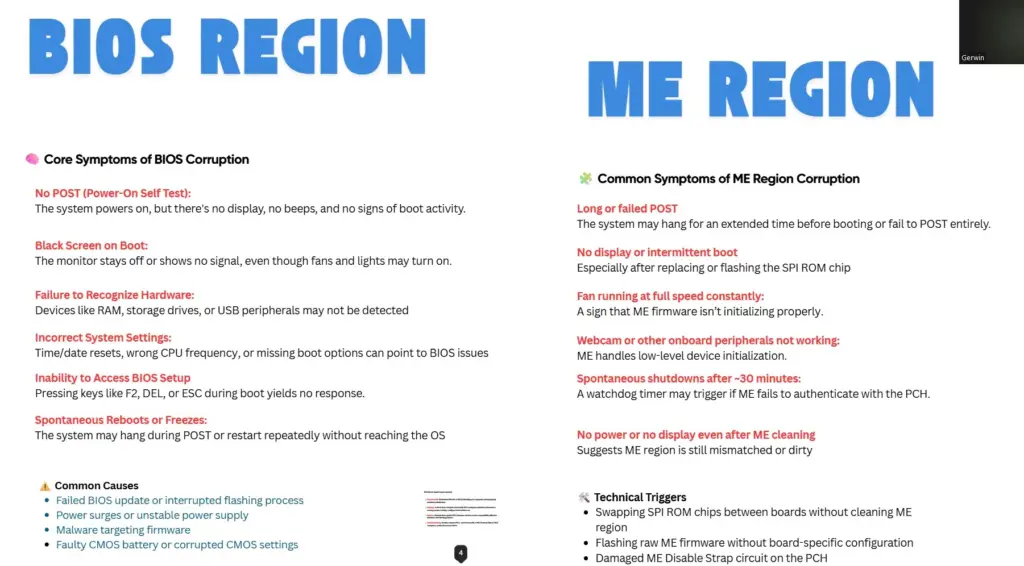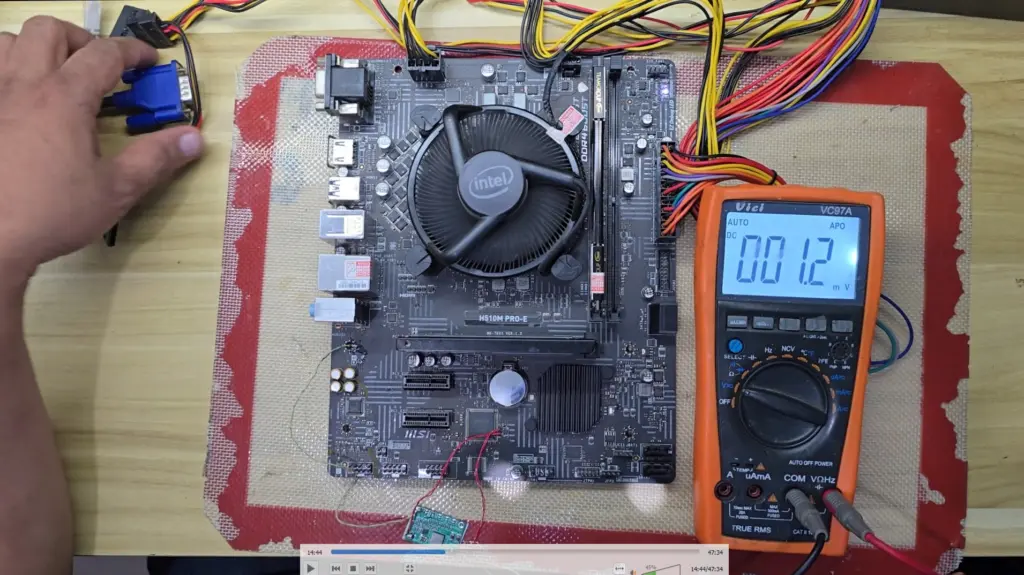HOW TO KNOW IF BIOS REGION OR ME REGION HAS PROBLEM

spotting BIOS or ME region faults is essential for deep-level motherboard repair. Let’s break down how to diagnose issues in the BIOS or ME (Management Engine) region, especially on Intel platforms.
🧠 Common Signs of ME Region Problems
- Laptop powers on but no display until multiple attempts
- Fan spins at full speed, then system shuts down in seconds
- Delayed boot (20–60 seconds after pressing power)
- MEI driver missing in Device Manager
- Random shutdowns or restarts
- Windows fails to load, or behaves erratically
These symptoms often point to a corrupted or mismatched ME region, especially after BIOS flashing or PCH replacement.
🔍 How to Detect BIOS or ME Region Faults
1. Use ME Analyzer
- Open your BIOS dump in ME Analyzer
- Check for:
- Invalid ME version or SKU
- Corrupted firmware structure
- Missing ME region
2. Run Intel ME Tools
meinfo→ Shows ME status and versionmestate→ Reveals if ME is disabled, corrupted, or waiting to timeoutfptw -greset→ Resets ME state (if accessible)
3. Inspect with UEFITool
- Look for:
- Missing or misaligned ME region
- Overlapping regions
- Incomplete descriptor map
4. Compare Firmware Sizes
- If BIOS dump is smaller than expected (e.g., 6144KB instead of 8192KB), ME region may be missing or truncated
🛠️ Fixing the Problem
- Use Intel TXE/ME Injector to clean or replace ME region
- Rebuild BIOS using tools like BiosCreator to repair BIOS region
- Match ME firmware version with chipset generation (e.g., CSME 11.x for Skylake)
Would you like to walk through a real BIOS dump together and analyze the ME region? I can help you interpret ME Analyzer output or guide you through cleaning the region with FITC.






Responses